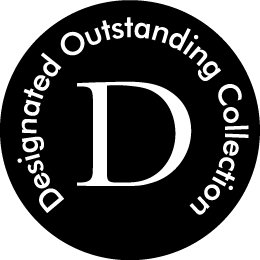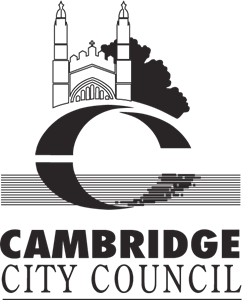Tudor bling at High Table: Archbishop Matthew Parker’s silverware for Cambridge Colleges
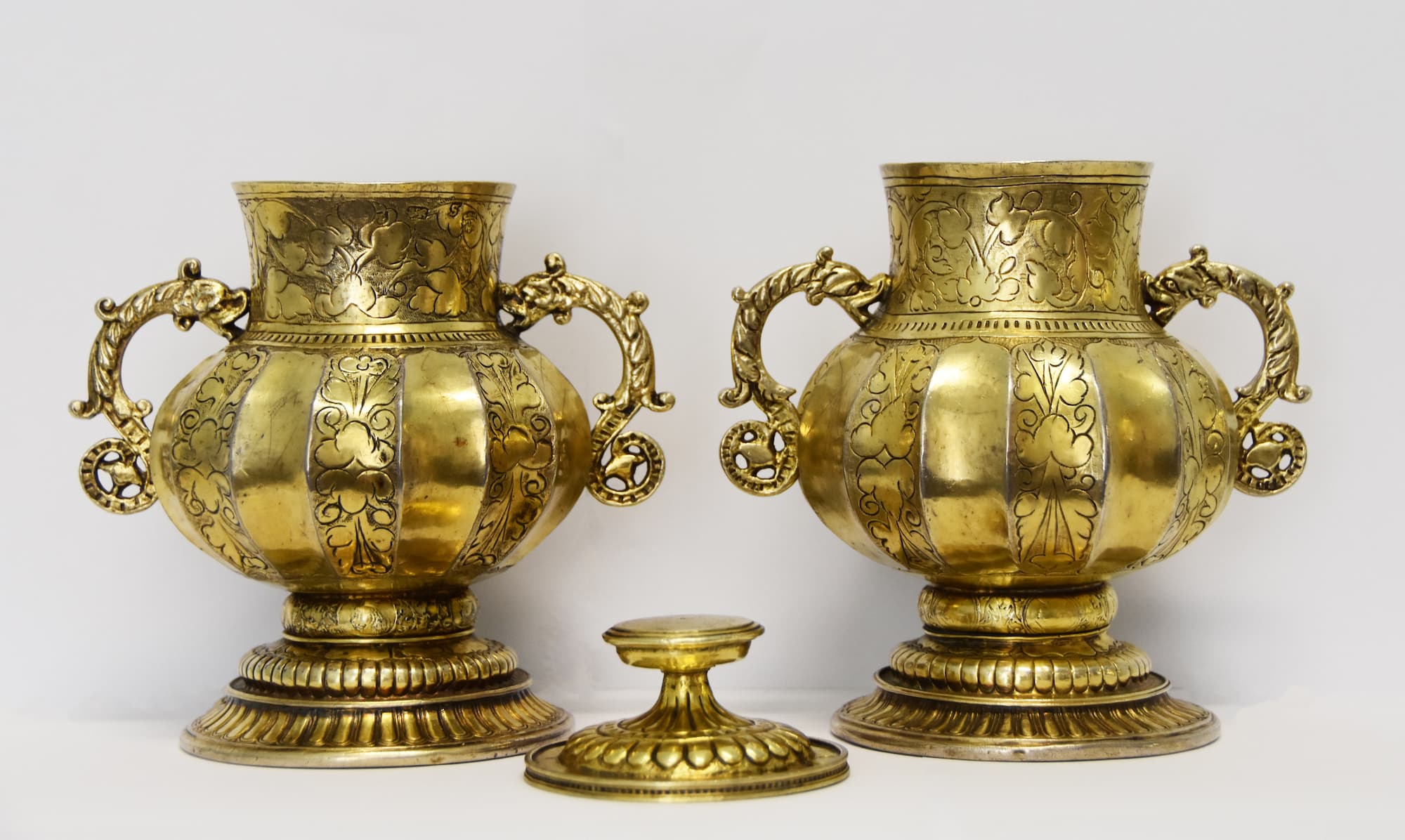
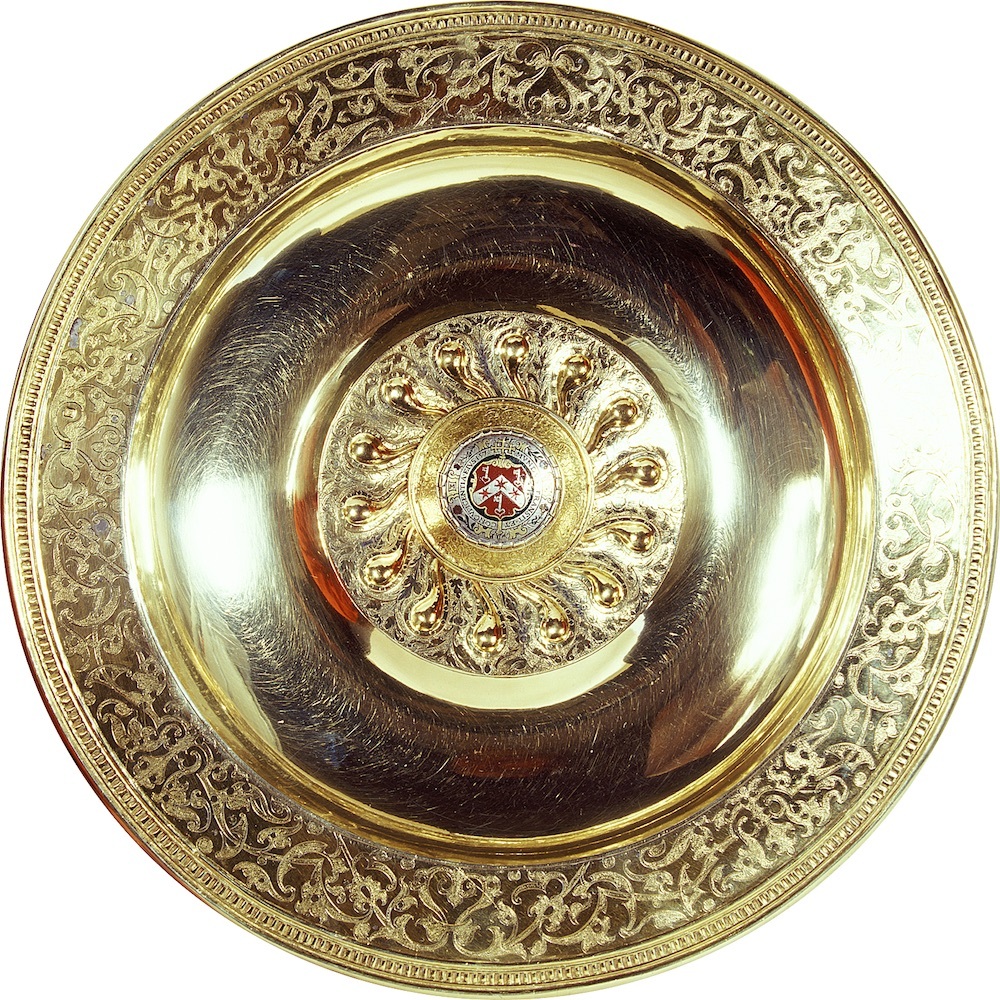
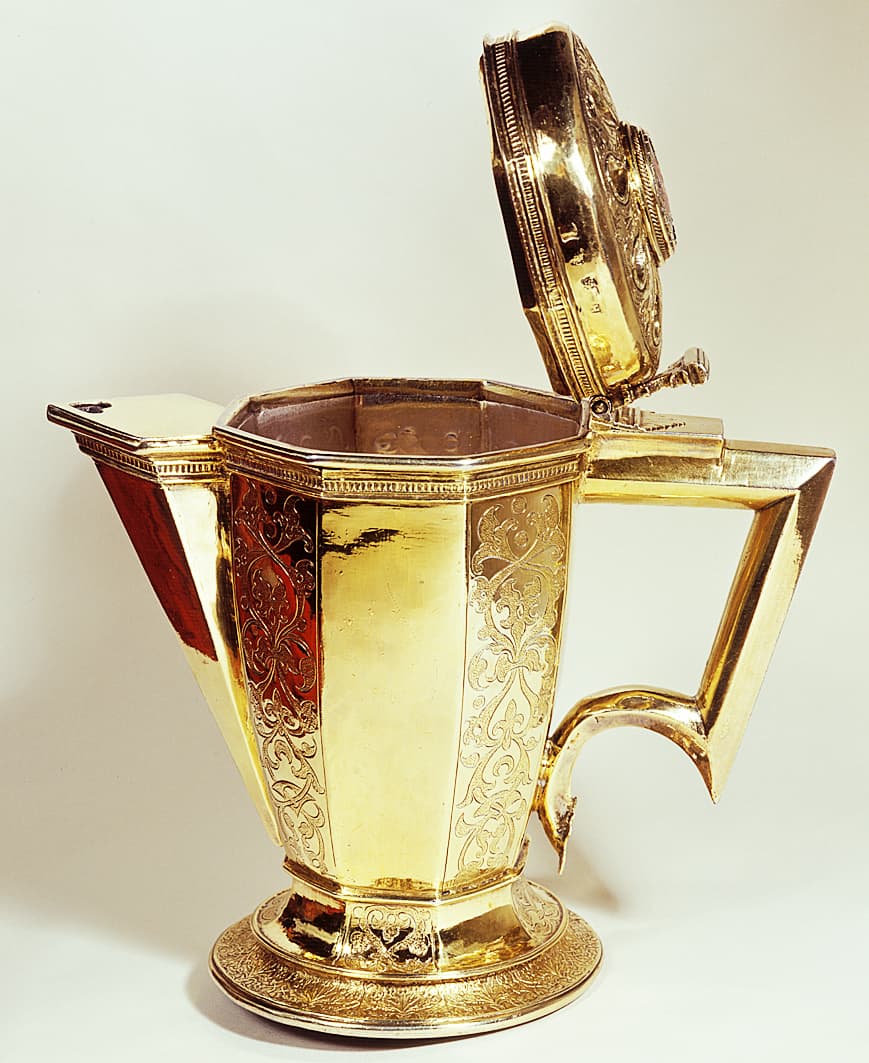
The Colleges of Cambridge own some of the most important pieces of Tudor secular (non-religious) silver anywhere in the world. Corpus Christi College has an unsurpassed collection of silver tableware – known as plate – thanks to several gifts from Norwich-born Matthew Parker, one-time Master and later Archbishop of Canterbury under Elizabeth I. While Parker made several lifetime donations to his old College, records prove that he hung onto most of it during his lifetime, only relinquishing it after his death. He also gave key pieces of silver to Gonville and Caius College and to Trinity Hall, both of which he favoured due to their Norwich connections. Feast & Fast reunites for the first time since 1975 one of Parker’s tankards from Gonville and Caius with a selection of Parker’s most important silver from Corpus. This astonishing array of Parker silver is displayed together with two rare and exotic 15th-century coconut cups from Caius, which are amongst the earliest known: a unique opportunity to see some priceless treasures of Cambridge College silver in the broader context of Tudor dining culture as conjured up by Ivan Day’s Renaissance sugar banquet for an English wedding for the Fitzwilliam exhibition.
The two ‘ox-eye’ posset cups and lid (fig. 1) were amongst Parker’s last gifts to Corpus, and none of them match: one cup was new when it was given, one was 15 years old, and the lid was 24 years earlier still. The later cup appears to have been commissioned by Parker as a pair to the first one. They are amongst the earliest surviving examples of posset cups. Posset was a mixture of curdled milk and ale or sack; the narrow top is said to have been used to gather the floating curd, so it could be eaten or removed leaving the clear fluid to be drunk.
The rosewater basin and ewer (figs 2-3) are late Gothic in style, dating from the reign of Henry VIII. They are the grandest pieces of silver that Parker gave to Corpus Christi; indeed, they are believed to be the earliest ewer and basin of this sort to survive anywhere in the world. They were made when Parker was Master, for his own use, and then gifted to the College on 1 September 1570. However, he retained them for use during his lifetime: they were only handed over to Corpus on 26 June 1575. They were used by diners to wash their hands during grand feasts – especially useful before the introduction of forks, which did not become common in England until the early 17th-century.
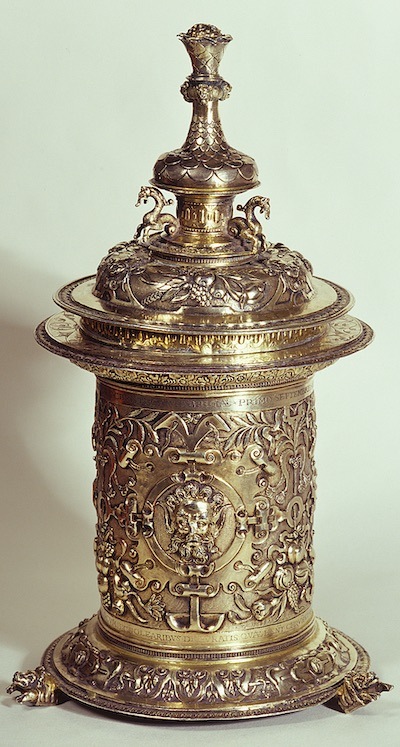
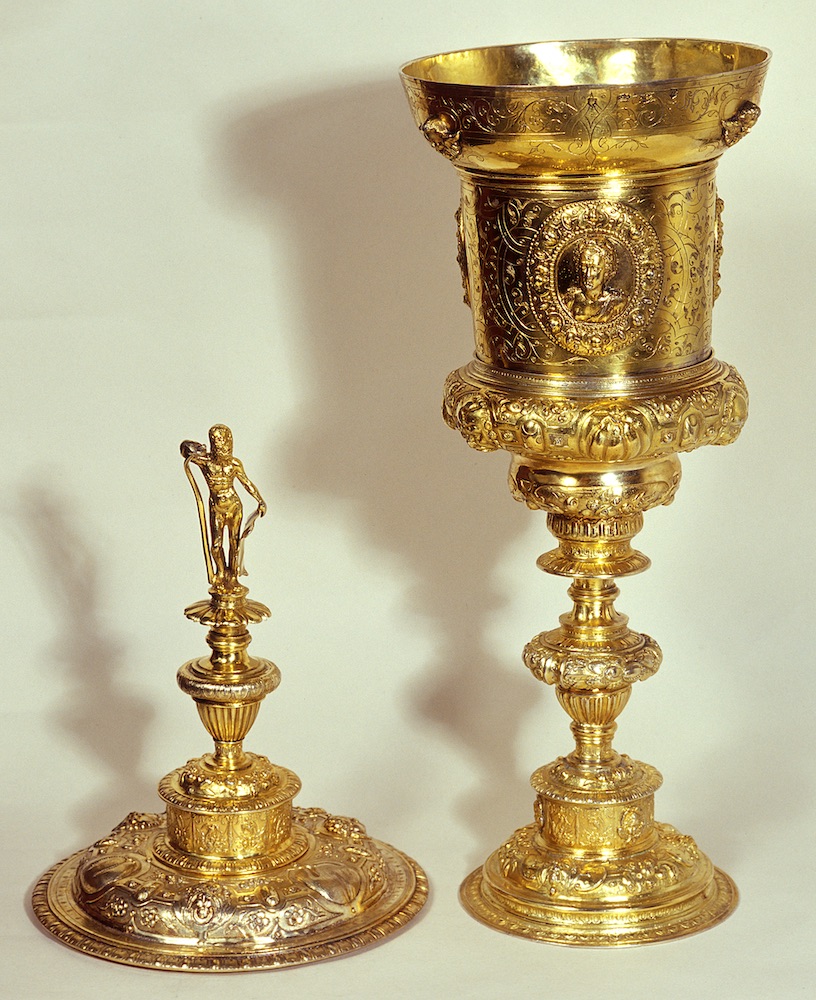
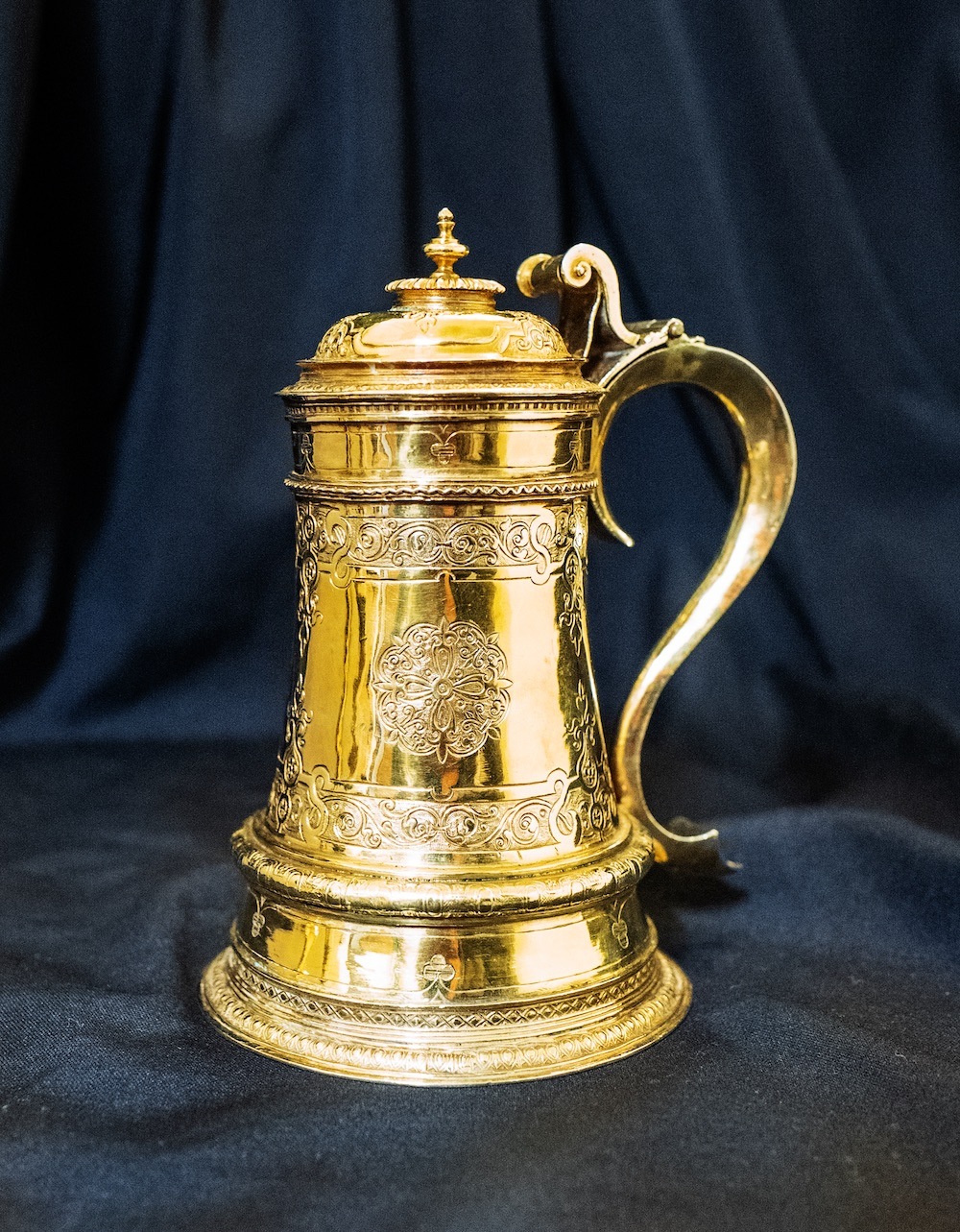
Cylinder salts were the height of fashion from c.1550, and remained popular throughout the 17th-century. Parker’s exquisite example (fig. 4) is unusual because it also contains a pepper-pot: the shallow cavity for salt is covered over by a push-fit lid, of which the upper part is a pepper-pot with six holes at the top. Like the rosewater basin and ewer, it was donated to Corpus on 1 September 1570, but not delivered until June 1575.
Parker’s great standing cup (fig. 5) is the second grandest in Cambridge (after the Vice-Chancellor’s Cup of 1592) and one of the most significant examples of an English standing cup of its date (1569) anywhere. It is a triumph pf technical virtuosity with some elements separately cast and soldered on. Its decoration includes a lot of food: including apples, pears, citrus fruit, melons, pomegranates and grapes. Despite its elaborate decoration, it was probably meant to be used as the cup is designed in two parts: the bowl is a push-fit into the base, and its inside is smooth, with no repoussé (embossed from inside against a mould) to complicate washing up! Presented to Corpus on New Year’s Day 1570, Parker ordered it to remain perpetually within the College, with Gonville and Caius and Trinity Hall to ensure this happened, and if it were lost or stolen, then a replica had to be made. On same day, Parker gave less elaborate cups, almost identical to each other, to Caius and Trinity Hall.
An inscription on the Caius tankard (fig. 6) records that it was a 1572 New Year’s Day gift. We know that on this day, Parker gave an identical tankard to Trinity Hall, and a similar one (made a year later, in 1571) to Corpus. These three are amongst the earliest known surviving tankards, which were to become the preferred type of drinking vessel in Cambridge Colleges during the 17th century.
During the Civil War when Charles I asked all of the Colleges to send him their silver, the Master and Fellows of Corpus secreted away all of the College’s most important pieces of silver to ensure that it could not be discovered by either the Cavaliers or the Roundheads, and taken away to be melted down. When they were returned, they were kept very carefully. Thankfully, everyone at Corpus was aware of their unique importance and so less important silver got melted down to pay for refurbishment projects and new buildings, rather than these unique, priceless treasures.

